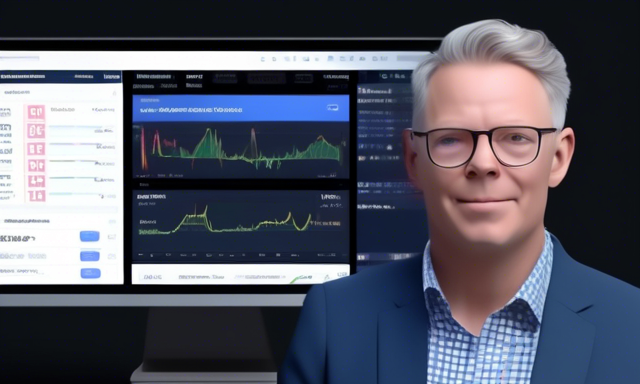Examining the Future of Tokenization: Insights from Graeme Moore 🌐
In a recent dialogue, Matt Zahab engaged with Graeme Moore, the Head of Tokenization at the Polymesh Association, a non-profit organization devoted to advancing the Polymesh blockchain ecosystem. Their conversation delved into the relevance of a dedicated blockchain for regulated assets, exploring five pivotal pillars: governance, confidentiality, compliance, settlement, and identity. Moore noted an interesting trend where traditional finance (TradFi) is integrating cryptocurrency elements and vice versa, emphasizing the innovative approach of tokenizing unique assets like the Old Stone Church in the USA.
💼 The Demand for Diversity Over Complexity
Polymesh operates as a public permissioned blockchain, specifically tailored for regulated assets. According to Moore, there’s a consensus among banks—they seek a variety of technology options rather than being tied down to a singular solution. Since banks primarily manage asset flows, they prefer utilizing diverse technologies tailored for different requirements. This strategy enables them to maintain flexibility within their technological framework.
Moore emphasizes that banks do not desire cumbersome technology that complicates operations and escalates costs. Instead, they look for straightforward solutions that facilitate efficiency. Notably, Polymesh distinguishes itself by being API-based, allowing assets to be created at the base layer without requiring extensive additional smart contracts. This simplification appeals greatly to banks and custodians, as it provides a sense of security and comfort in their operational processes.
🌟 Addressing Key Concerns of TradFi Investors
In discussions with regulated securities market players, the Polymesh team identified a commonality in the challenges these entities face. They distilled these issues into five core areas that Polymesh strives to address:
- Governance: A centralization aspect is crucial since banks cannot afford disruptions, such as chain splits, that might halt trading activities.
- Identity: Verification of users’ identities is essential to safeguard against financing illicit groups or individuals.
- Confidentiality: Financial institutions require strict privacy measures during trades to protect their market positions.
- Compliance: Polymesh simplifies compliance, integrating it directly into asset creation at the blockchain’s base layer, preventing the complications often experienced with Ethereum, which heavily relies on smart contracts.
- Settlement: Polymesh ensures that settlement processes resemble those of traditional markets, requiring mutual agreement before transactions proceed, thus protecting banks from unsolicited transactions.
🔗 The Crypto Wrapper on Traditional Assets
A significant trend within the traditional finance landscape is the conversion of conventional assets into tokenized forms. Moore notes that regulated entities are now adopting crypto wrappers around traditional assets, including Treasury Bills and money market funds. He foresees a growing phenomenon where traditional and crypto assets will increasingly integrate, catering to evolving investor preferences.
With advancements in tokenization technology making it more cost-effective and streamlined, individuals will soon be able to create structured financial products with ease. Imagine a process where someone can fractionally invest in properties by clicking a button—this represents a captivating shift in accessibility and democratization of investment opportunities.
⛪ Tokenizing Unique Properties: The Case of the Old Stone Church
This year, the Old Stone Church located in Colorado attracted attention for its innovative tokenization project, aimed at generating $2.5 million to purchase the land it occupies. The initiative, which is being facilitated by RETokens, illustrates the expansive possibilities of blockchain technology in funding community landmarks. Moore expressed optimism that such endeavors could proliferate both nationally and globally, reflecting the transformative potential of tokenization.
Polymesh serves as the underlying infrastructure that enables others to carry out tokenization projects. The platform has ambitious plans: RETokens intends to tokenize a portfolio of real estate assets valued at $30 million and subsequently announced intentions to tokenize an additional $60 million. This represents significant progress in the burgeoning field of real estate tokenization.
🔥 Hot Take: A Bright Future Ahead
As Graeme Moore highlights throughout the conversation, the future of tokenization, particularly within the traditional finance world, is promising. The reinforcement of established practices via innovative blockchain solutions provides a pathway toward more secure and efficient operations. Moore’s vision aligns with a greater movement toward enhanced accessibility and sophistication in asset management, inviting a transformative era for how assets are perceived and traded.
Exploring these developments fosters a deeper understanding of the intricate relationship between technology and finance, providing insight into a diversifying landscape where traditional and digital realms converge.
For further details about the projects discussed, you may want to explore the sources that shed light on these innovative advancements.
Polymesh Network on X
API Overview
RETokens on Polymesh
AlphaPoint Integration





 By
By
 By
By

 By
By

 By
By